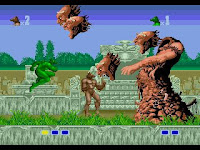System: Xbox 360 & PC
Release: November 2008
Anyone who is a fan of the First Person Shooter should know Valve. They are the geniuses responsible for such dynasties as Half-Life, Counter Strike, Portal, Team Fortress, and most recently Left 4 Dead. All of these games have remarkable gameplay and addictive multiplayer. Valve has an unbeaten record of success in the FPS market similar to Blizzards thriving supremacy in online RPGs.
Left 4 Dead feels remarkably similar to other Valve games with the same great gameplay that is expected from the Source engine. Combat is smooth and intense. For the single player and coop game modes users take control of four survivors. These lucky fellows get to fight there way out of a zombie infection that has apparently taken over most of the country. Now these aren’t your typical zombies. They are fast and numerous jumping over obstacles to kill anyone who is not infected. If you are familiar with 28 Days Later, then you have a good idea of what you will be up against. The “Horde” is supported by five boss zombies—tank, smoker, boomer, hunter, and witch. The tank is a hulk like zombie that deals out a ton of damage. Smokers can snatch survivors with their long tongues paralyzing them until the tongue or Smoker are destroyed. Hunters pounce on their victims pinning them to the ground. Boomers are zombie Fat Bastards who puke on survivors to attract a Horde and explode when killed. Finally there are witches. These crying bitches will destroy all survivors if they are not careful. She is more powerful then a tank, and is best left alone.

The survivors consist of four well done stereotypes. First there is Bill. He is a Vietnam vet who misses the good ole days of killing Charlie. Second is Francis, who apparently loves chaos. This makes the zombie infection a welcomed change of pace to his boring biker days. Then there is Zoey. She just so happens to be the sexy college brunette who loves watching zombie movies. Finally there is Louis. He fills the role of the minority/office worker. He sees the infection has a way out of his dead end job. The survivors handle identically. They can wield the same limited armaments—pistols, smg, assault rifle, hunting rifle, shotguns, pipe bombs, and molotov cocktails. All of these characters are done well, but it would have been nice to have more. With so many stereotypes in the world there could have been additional characters to choose from.
Left 4 Dead is purely a multiplayer game. There is a single player campaign, but it provides little entertainment beyond an initial play through. The two multiplayer game types are Versus and Coop. The later allows four players to venture through a campaign against purely AI enemies. The former provides users the opportunity to play as the Boss Infected. Coop games take advantage of all four campaign stories, but Versus utilizes only two. The limited number of maps is a disappointment, but Valve mixes up each game by randomizing enemy/item spawn points. This means that
 each game produces a unique experience—this is especially true in Versus when humans are controlling the boss zombies. At the end of each campaign the stats are displayed like the credits to a movie complementing the horror movie atmosphere this game produces.
each game produces a unique experience—this is especially true in Versus when humans are controlling the boss zombies. At the end of each campaign the stats are displayed like the credits to a movie complementing the horror movie atmosphere this game produces. Valve has done it again with another successful FPS multiplayer game. There ability to produce addictive entertaining experiences is truly fantastic. The smooth gameplay, random spawn points, and amazing AI produce an intense experience any FPS veteran can appreciate. If Valve continues to support this game with new maps—and maybe characters—then it could possibly become as big as Counter Strike. Rubber’s Review grants Left 4 Dead a 4.5 out of 5.







































